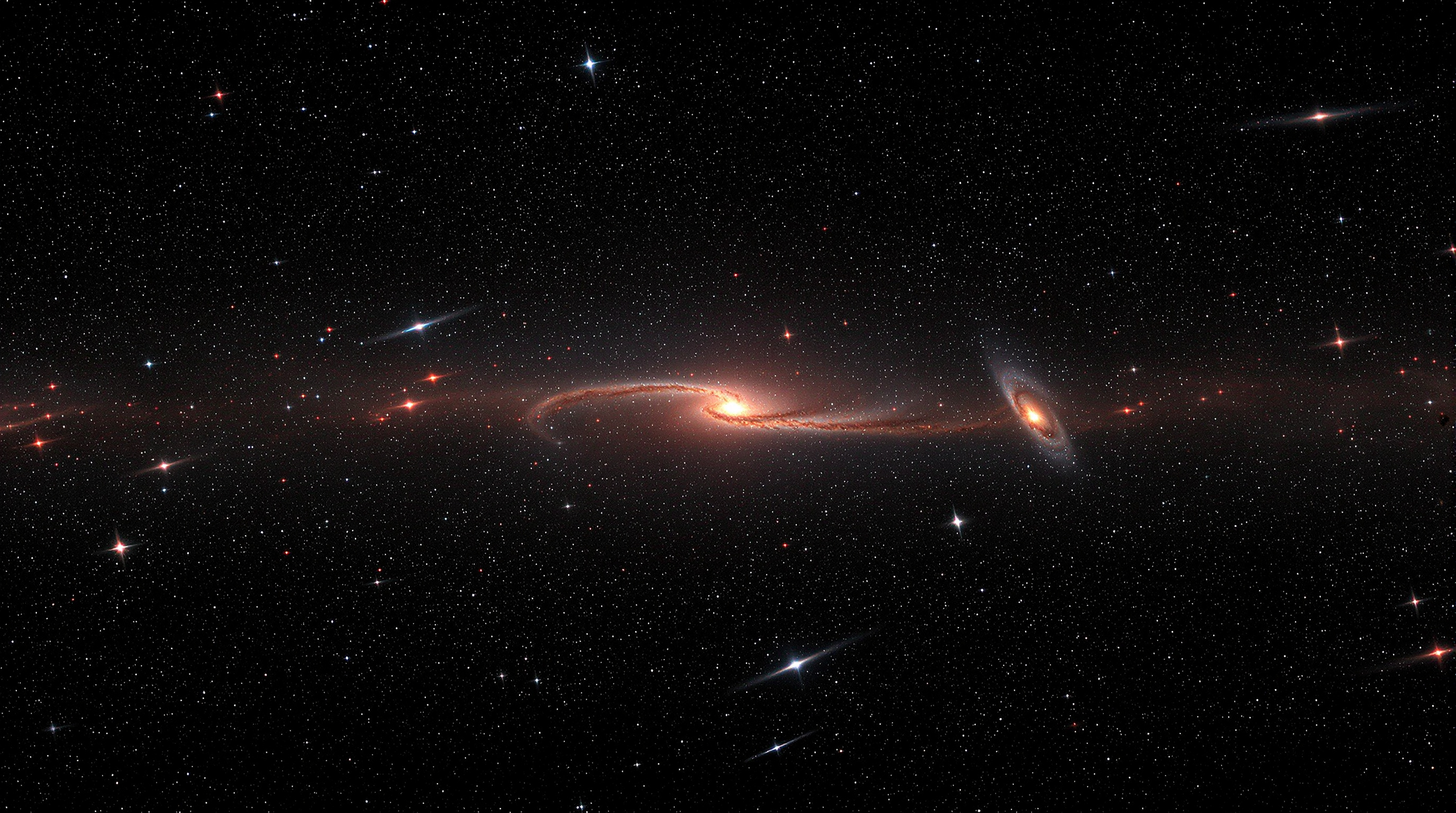One of the most frequently cited challenges to young-earth creation models is the distant starlight problem: if the universe is only thousands of years old, how can we observe galaxies located billions of light-years away? The light from these distant objects should take billions of years to reach Earth, yet we observe them in a supposedly young universe.
This apparent contradiction has prompted considerable research within the creation science community, yielding several proposed solutions that reconcile Biblical chronology with astronomical observations. Each approach offers different insights into the nature of time, space, and creation.
Understanding the Problem
Modern telescopes observe galaxies at immense distances - the most distant confirmed galaxies lie over 13 billion light-years away. According to standard physics, light travels at a constant speed of approximately 186,000 miles per second, meaning light from these distant galaxies should have taken over 13 billion years to reach us.
However, Biblical chronology, based on the genealogies in Genesis and other scriptural evidence, suggests a universe age measured in thousands rather than billions of years. This apparent discrepancy requires explanation if we are to maintain both the reliability of Scripture and the validity of scientific observation.
Gravitational Time Dilation Solutions
Several creation cosmologists have proposed models based on Einstein's general relativity, which demonstrates that time passes at different rates depending on gravitational fields and relative motion. In a bounded universe with Earth near a center, time could have passed much more rapidly in distant regions while proceeding normally on Earth.
White Hole Cosmology: Developed by Dr. Russell Humphreys, this model proposes that during Creation Week, the universe underwent massive expansion from an initial water-bound state. Extreme gravitational time dilation allowed billions of years to elapse in distant regions while only days passed on Earth, enabling distant starlight to reach us within the Biblical timeframe.
Time Dilation Cosmologies: Various refinements to gravitational time dilation models have been proposed, each attempting to reconcile distant starlight with young-earth chronology while maintaining consistency with general relativity and observational evidence.
Speed of Light Decay
Some creation scientists have investigated whether the speed of light might have been different in the past. If light traveled significantly faster during or shortly after Creation Week, distant starlight could have reached Earth in much less time than current light-speed calculations suggest.
This hypothesis faces significant challenges, as a changing speed of light would affect many physical constants and processes throughout the universe. However, proponents argue that coordinated changes in multiple constants could preserve observed physical relationships while allowing for variable light speed in Earth's early history.
Created in Transit
Another approach suggests that God created light from distant stars already in transit to Earth during Creation Week. Just as Adam was created as a mature adult rather than an infant, the universe may have been created in a mature, functional state with light already spanning the distances between stars and Earth.
Critics sometimes characterize this as God creating a false history, but proponents argue it simply reflects functional creation. A universe created for humanity to observe and study would naturally include observable distant objects, requiring light to be present from the moment of creation.
Cosmological Relativity
Dr. John Hartnett has developed models based on modifications to general relativity that allow for different time scales in different parts of the universe without requiring Earth to occupy a special position. These models invoke time dilation effects from cosmic expansion itself rather than requiring a gravitationally-bound universe.
In Hartnett's cosmology, the universe underwent rapid expansion during Creation Week, with time dilation allowing light from the most distant regions to reach Earth within thousands of years as measured in Earth time, while billions of years elapsed in the expanding cosmos.
The Conventional Expansion Model
It's worth noting that conventional Big Bang cosmology faces its own version of the distant starlight problem in the form of the horizon problem. According to standard cosmology, regions of the universe separated by more than the light-travel time since the Big Bang should never have been in causal contact, yet they show identical properties.
The conventional solution - cosmic inflation - invokes a period of faster-than-light expansion in the universe's first fraction of a second. Interestingly, this solution shares conceptual similarities with some creation cosmology models, acknowledging that simple light-travel-time calculations don't fully capture cosmic history.
Biblical Perspective on Time and Creation
Scripture provides hints that time itself may be more complex than we typically assume. Passages describing God as existing outside of time (2 Peter 3:8, "With the Lord a day is like a thousand years, and a thousand years are like a day") suggest that time is a created dimension rather than an absolute framework.
During Creation Week, God spoke the universe into existence through direct supernatural intervention. The processes of this creation week may not correspond directly to natural processes operating today. If time itself was created and structured during that week, standard calculations based on constant physical laws may not apply.
Observational Evidence and Testing
The various proposed solutions to the distant starlight problem make different predictions that can potentially be tested through observation. Time dilation models predict specific patterns in distant galaxy properties, while created-in-transit models make different predictions about the distribution and properties of astronomical objects.
As observational astronomy advances and cosmological data becomes more precise, these models can be refined and tested. The goal is to develop cosmologies that remain faithful to Biblical revelation while accounting for the full range of observational evidence.
Conclusion: An Ongoing Investigation
The distant starlight problem represents a significant challenge that creation scientists take seriously. Rather than dismissing the issue or abandoning Biblical chronology, researchers continue developing models that honor both Scripture and scientific observation.
While no single solution has achieved consensus within the creation science community, the various proposals demonstrate that multiple plausible mechanisms exist for reconciling distant starlight with a young universe. Ongoing research continues to refine these models and explore new possibilities, advancing our understanding of cosmic history and creation.
